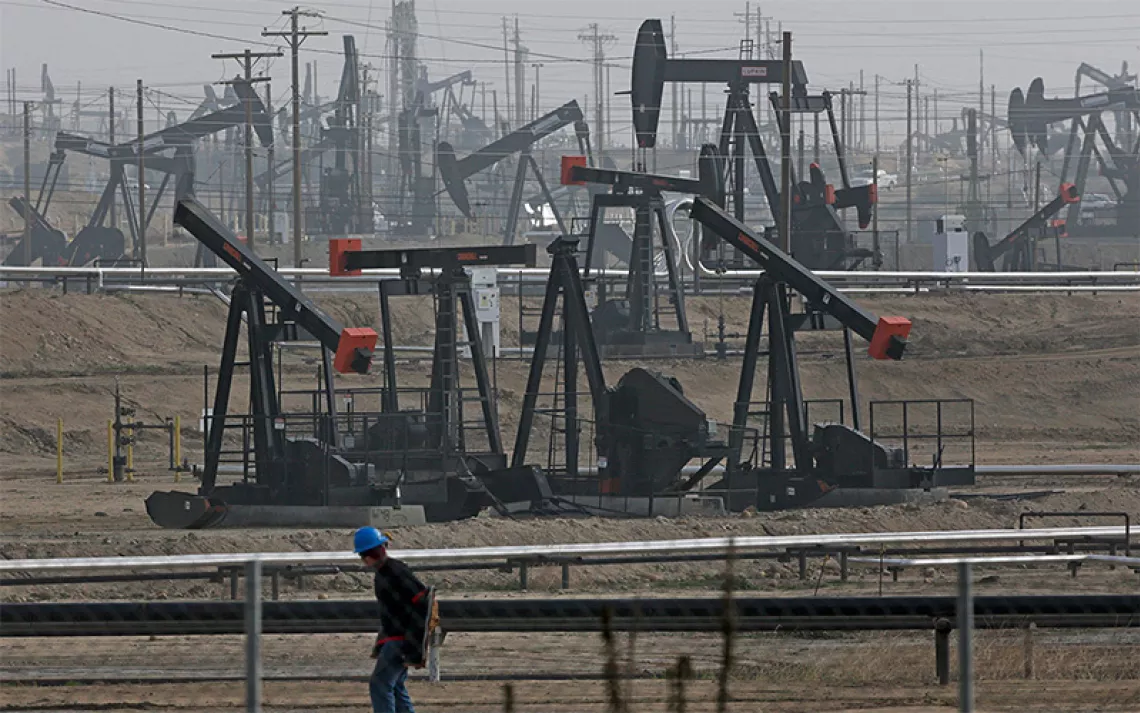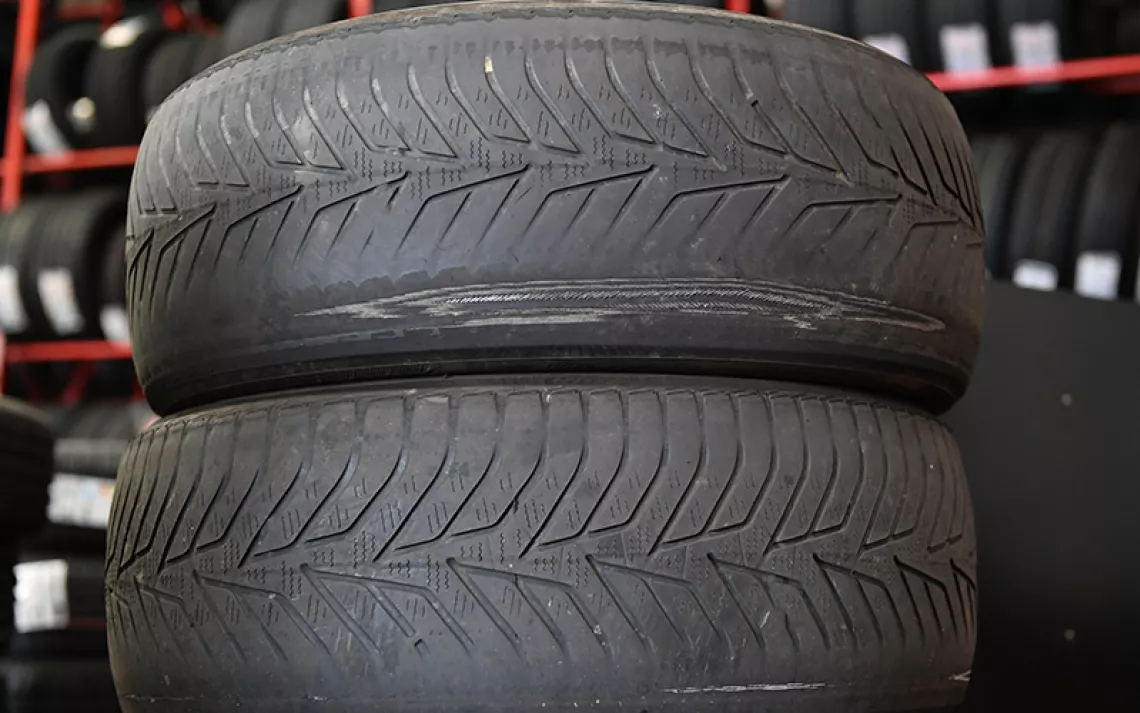Only Oil Companies Are Happy About Trump’s Fuel Efficiency Rollbacks
Public hearings have brought opposition from all sides, including the auto industry

Donald Trump’s EPA is determined to dismantle Obama-era fuel-efficiency standards for automobiles, but this latest attack on environmental protections might be another case of Trump overreach: Not even the major auto manufacturers are behind the EPA’s proposal anymore. Opposition to the EPA’s proposed fuel-efficiency plan came from all sides last week during hearings in Fresno, California; Dearborn, Michigan; and Pittsburgh, Pennsylvania. Hundreds of people—including ordinary vehicle owners, energy industry professionals, environmental litigators, and state and local lawmakers—showed up at the hearings to express their opposition to the planned weakening of tailpipe standards. “There were more than 120 people [in Dearborn], and I think I remember three that were in support of this rollback,” said Dave Cooke, a senior vehicles analyst with the Union of Concerned Scientists. “The only major beneficiary of this proposal are the oil companies.”
One of the most unexpected advocates for maintaining some targets for fuel efficiency are the U.S. auto companies. In the testimony prepared for the hearings, the Auto Alliance stated, “Automakers support continued improvements in fuel economy while balancing priorities like affordability, safety, jobs, and the environment. We urge California and the federal government to find a common-sense solution that sets continued increases in vehicle-efficiency standards while also meeting the needs of America’s drivers.”
The Obama administration’s fuel-economy regulations mandated that new cars and light trucks reach a fleetwide average of 54 miles per gallon by model year 2025. Earlier this year, Trump’s National Highway Traffic Safety Administration (NHTSA) and the EPA issued new draft rules that would freeze efficiency standards for new cars after 2020, essentially stalling fleetwide fuel economy at around 36 mpg. The Trump administration is also moving to prevent California from excercising its long-standing power to set higher standards than the federal ones.
Auto companies are especially fearful of being caught in a regulatory limbo in which there is a national standard and then also a California standard that many other states will want to pursue. “They pushed for weaker standards, but the proposal they got from Trump is a “Pandora’s box,” Cooke said. “A lot of their lack of support for this proposal comes from the fact that what it does is it sets up a conflict with the states that follow California’s standards, and it’s going to end up in litigation for years, which creates uncertainty for them,”
Andrew Lindhardt, deputy director of the Sierra Club’s Clean Transportation for All campaign, agrees. “Unfortunately, what we saw at the beginning of Trump's tenure was the companies going in to complain about these standards,” he said. “To their credit I don’t think they wanted the standards gone. They wanted reductions in them and to make it easier on themselves.... They released something they did not quite expect.”
The auto manufacturers were proponents of the rollback before they opposed it, however. The Auto Alliance pushed the Trump administration to backtrack on auto standards as soon as the new president took office. In February 2017, a month after Trump’s inauguration, the alliance wrote a letter to incoming EPA administrator Scott Pruitt urging him to revisit the standards. “The MY 2022–2025 standards threaten to depress an industry that can ill afford high regulatory costs. If left unchanged, those standards could cause 1.1 million Americans to lose their jobs over lost vehicle sales,” the letter states. That statistic comes from the Center for Automotive Research, a center that receives funding from the alliance. It wasn’t just the Auto Alliance pushing for a rollback. Individual automakers pushed for a fuel economy do-over as well. “I think every [automaker] that produces SUVs and pickups will benefit from (a) rollback,” said Sergio Marchionne, CEO of Fiat Chrysler, at the Geneva Auto Show in early 2017. But once the Trump proposal was released, the auto manufacturers panicked; it was more than they had asked for and threatened to cause more problems for the industry.
At the public hearings on the proposed new tailpipe standards, opposition to the Trump plan came from many directions. Critiques ranged from public health concerns over air quality to climate change arguments to economic worries about the price of gas. “It’s either the auto companies innovating and putting money into people’s pockets, or they pay more at the pump and the money goes to oil companies,” Lindhardt said.
States’ sovereignty also played a major role, since the rule would strip California’s ability to set its own tailpipe standards. California has had waivers to set its own efficiency standards under the Clean Air Act for decades, but the Trump administration is threatening to revoke California’s waiver. The attorney general of California, Xavier Becerra, made scathing comments at the Fresno hearing, which had over 130 speakers. “My message to the federal government: Do your job. Withdraw this proposal. Fulfill your duty under federal law to protect all Californians and Americans from harmful greenhouse gas emissions and to conserve energy,” Becerra said. Becerra and attorneys general from 19 other states are suing the Trump administration over the move to reopen the standards.
EPA and NHTSA claim that the efficiency standards hurt consumers—and go so far as to argue that improved fuel economy is dangerous to drivers. The Trump administration says that the standards make cars more expensive and less safe, but there is little evidence of this. At one hearing, the UCS’s Cooke testified that there is a lack of scientific backing for the administration's proposal. “Much of the justification for this rollback is being pinned on a model that has not been peer-reviewed,” Cooke said. “I told the lawyers there from NHTSA and EPA that three hours wouldn’t be enough to break down all the flaws in this proposal—three minutes certainly wasn’t.” The Trump administration argued that freezing standards would prevent more than 12,000 deaths, but experts aren’t so sure; The New York Times has reported that some of the academics whose research the Trump administration cited didn’t agree with the EPA and NHTSA conclusions. Dr. Antonio Bento, of the University of Southern California, whose work was cited in the proposed rollback, told The Times, “I don’t know how they can defend this analysis. I just don’t think it is correct.”
Higher fuel-efficiency standards saved middle- and low-income Americans up to 2 percent of their income between 1980 and 2014, according to the Union of Concerned Scientists. Although cars are now more efficient and cheaper to drive, their purchase costs have remained roughly constant for the last 10 years. If the proposed Trump rule is put in place, Americans will have fewer choices in the cars they buy. Especially for people who buy used cars, the rule could have long-lasting ripple effects.
With so much opposition and few commonsense reasons to put the proposed rule in place, the administration's determination seems to be driven by wanting to please its allies in the oil industry. At its core, the proposed rule is based upon the ethos that all regulation is bad regulation—especially environmental regulation. “This administration is driven by a deregulatory, far-right agenda. They don’t believe in climate change,” Lindhardt said. “This comes from a deep desire to undo everything Obama did as well as to advance the interests of the Koch brothers and the oil companies.”
 The Magazine of The Sierra Club
The Magazine of The Sierra Club



